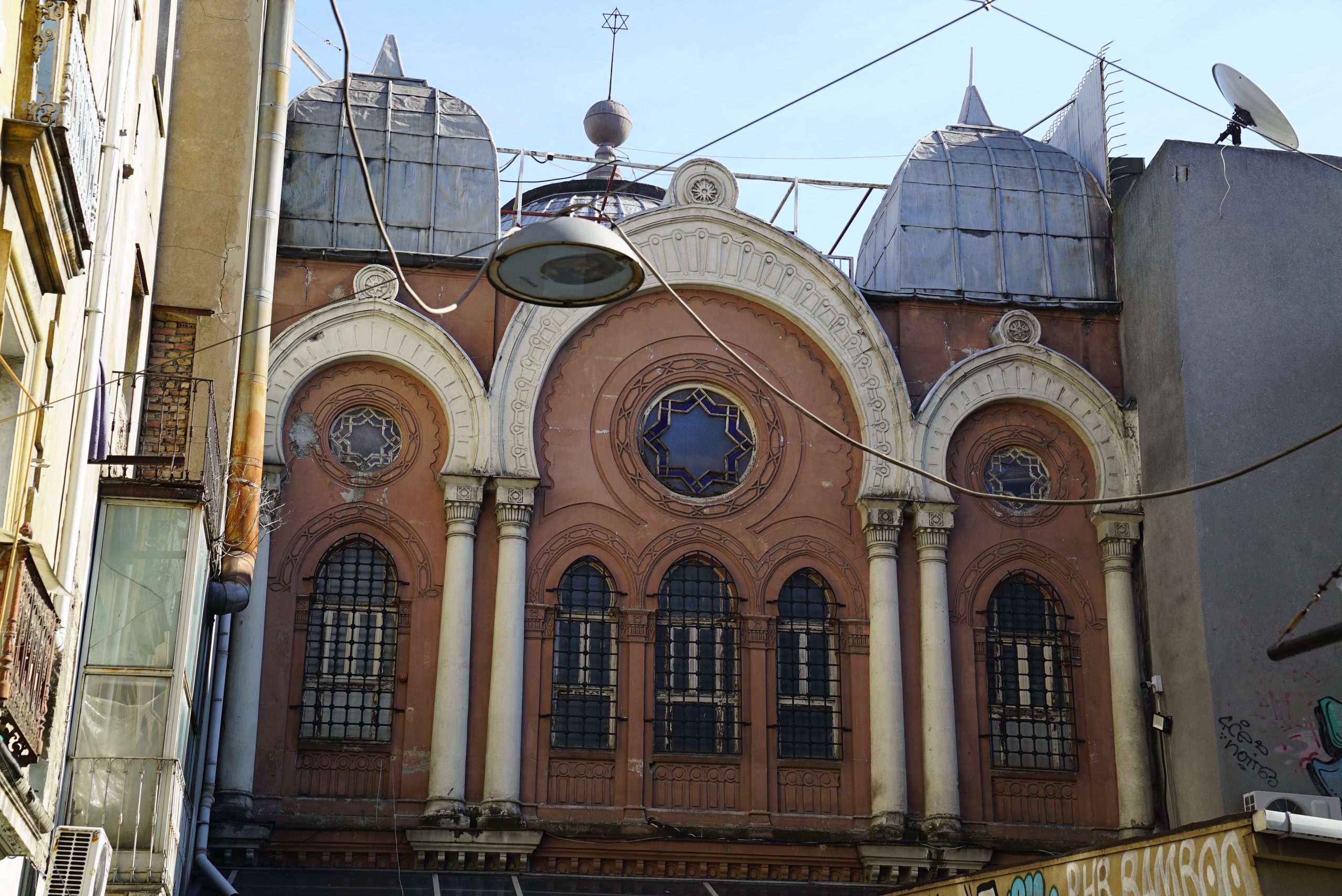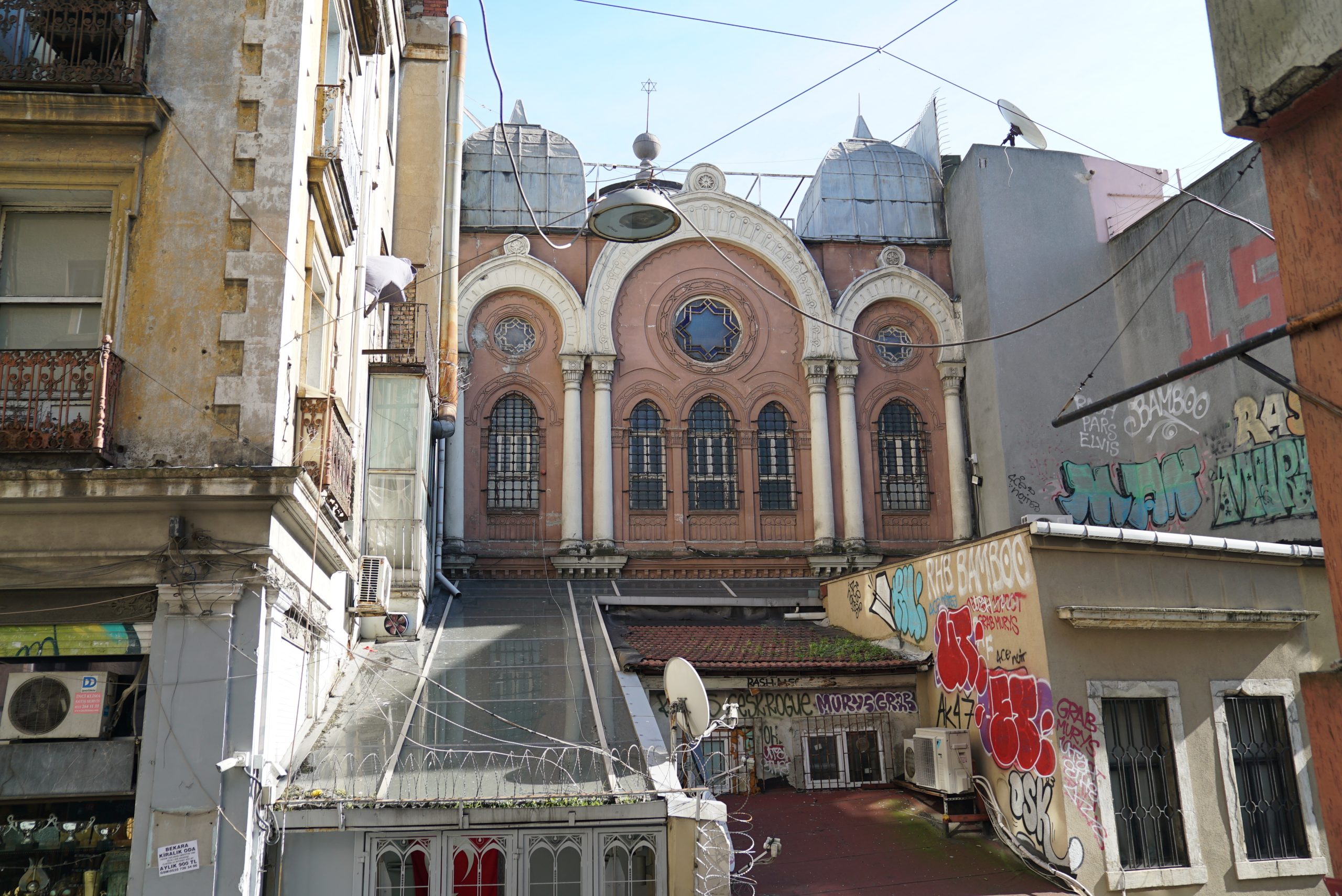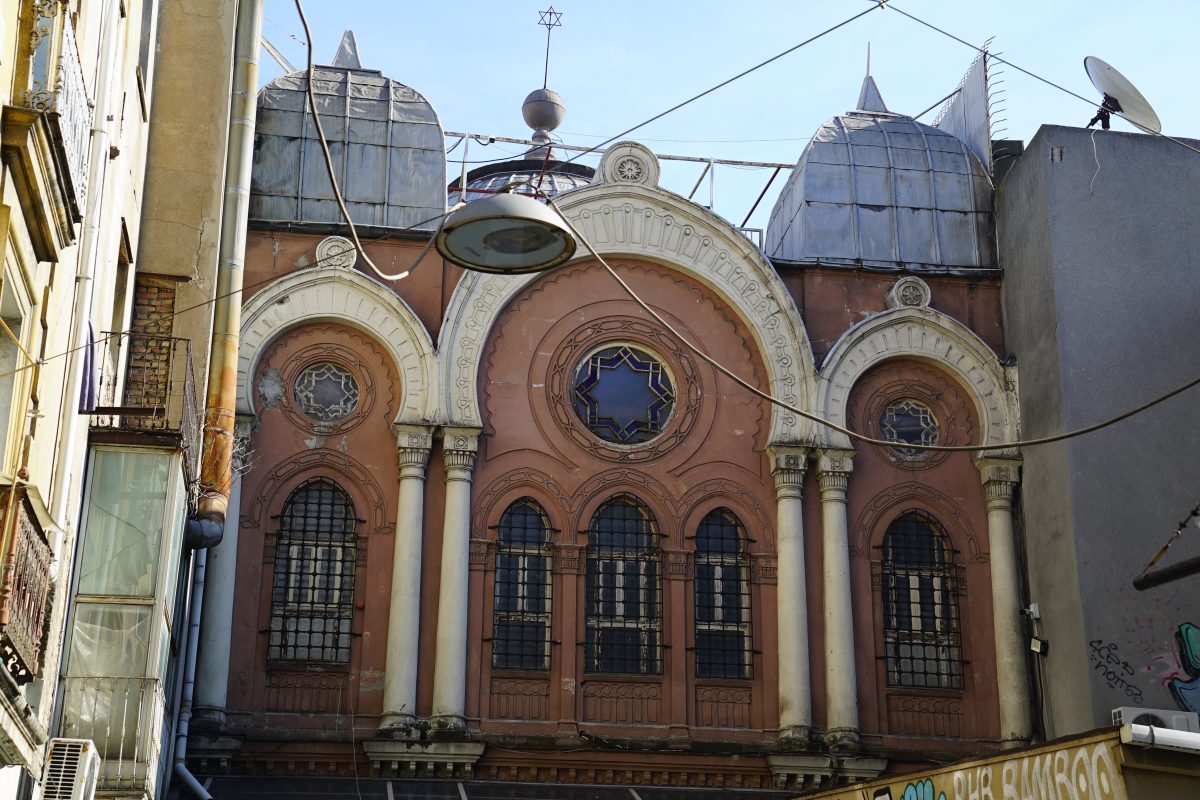İstanbul’s cultural heritage is always ready to surprise you. Especially the Galata area fascinates me with its multicultural identity.
Galata area is steeped in history. Walking these same cobblestone streets that have been here for centuries makes me think the continuity and change that defines İstanbul. I love how this area blends the old with the new. The historic buildings, the trendy cafes, and the art galleries – it’s a unique mix.
In the past, most of the tradesmen in the area were Jewish tailors, doctors, greengrocers, butchers, tavern keepers and rabbis. There was a neighbourhood culture. This situation lasted until the 1970s. As people migrated to the north of the city, the population gradually declined, and in the 2000s it was observed that the Jewish population in the neighbourhood decreased significantly. However, the Great Ashkenazi Synagogue, which hosts the street, has always kept Yüksek Kaldırım Street alive.
The Soul of the Street
For some time, I have been curious about the Ashkenazi culture that gives Galata its soul. The Great Ashkenazi Synagogue was the starting point of my curiosity. When the weather was better, I had the opportunity to visit this synagogue, which had been on my list of places to visit for a long time. From what I have learnt, the Ashkenazis who lived in the area have shaped the historical, social and architectural background of Galata. Yüksek Kaldırım Street is famous for its crowd because of the Grand Ashkenazi Synagogue which is the only synagogue that is still active today.
Sense of Timelessness
The synagogue has a large, shining dome decorated with stars. The dome is painted blue to represent the sky. When I entered, I remember being impressed by the care with which history had been kept. Places like this always fascinate me. As I walked around, the prayers and songs of past generations seemed to echo off the walls, giving the place a sense of timelessness.
You can immediately see the unique mosaic of European influence and local Ottoman style in the architecture. The high ceilings, the magnificent chandeliers that were brought from Vienna and the embroidered motifs of Islamic architecture are a little reminiscent of the pavilions of the Ottoman Empire. The synagogue is a silent but impressive testimony of art and craftsmanship…
The Great Ashkenazi Synagogue was designed by the Venetian G.J. Cornaro, one of the most important architects of the time, and some of the cabinets were made by Fogelstein, the famous sculptor of the period. The woodwork on the platform and the cabinets where the Torah rolls are kept is very impressive. There are two balconies where women can sit and pews with a capacity of 400 people. It is said to have been the largest synagogue in the Ottoman Empire at that time.
Cultural Heritage
For a young visitor like me, this synagogue is not just a historical site. It is a place that represents the enduring heritage of Ashkenazi Jews in Istanbul, whose contributions enrich the city’s cultural mosaic. Their impact on music, cuisine, literature, and commerce within the city is unique.
As I was leaving the Great Ashkenazi Synagogue, I was reminded of how important it is for places like this to be preserved, not just for the particular community, but as part of the world’s cultural heritage.



